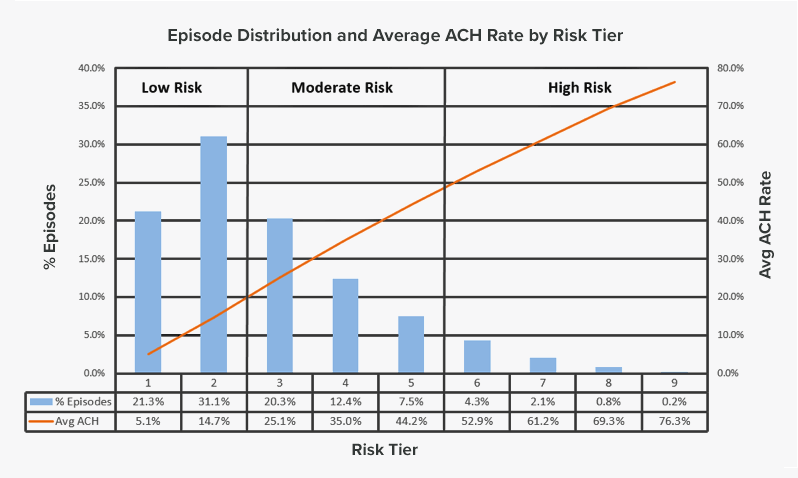Given the significant role that hospitalization rates play in publicly reported scores, star ratings, and value-based purchasing calculations, preventing unplanned hospitalizations is one of the top priorities for home health agencies. This means that agencies that want to succeed in this quality-driven environment must have the ability to identify high-risk patients.
SHP has provided predictive analytics for identifying home health patients that are at-risk of being hospitalized for many years. However, with the implementation of OASIS-D in January 2019, SHP decided not only to revisit the methodology used for identifying high-risk patients, but also significantly enhance and refine it.
SHP used a data set with 5 million episodes to build and test its new predictive model, which uses 163 various risk factors to determine a specific risk of hospitalization tier for each individual patient. The new model uses a significantly increased number of risk factors to improve the prediction accuracy and reduce the percentage of false positives. When compared to the old approach, the new model has a higher “true positive” and a lower “false positive” rate across the continuum of risk.
In addition to improving the accuracy of the model, based on our customers’ feedback, we took the opportunity to identify and report risk levels at a finer grain. While before we only calculated moderate or high risk score of hospitalization, we now present information on the scale from 1 (lowest) to 9 (highest).

The chart below shows the results of the hospitalization risk analysis. This demonstrates the distribution of percent of episodes in the data set in each risk tier vs. the average acute care hospitalization (ACH) rates.

SHP uses the new acute care hospitalization risk model in many different areas throughout the SHP alerting and reporting suites.
With the new model, home health agencies can now take the opportunity to review patient-level alerts and reporting in SHP and adjust their Plans of Care (POC) based on specific risk factors for each patient. For example, agencies may choose to employ telemonitoring for high-risk patients in order to help prevent unplanned hospitalizations.
Overall, we feel confident that the improvements made to our risk of hospitalization algorithms and reporting resulted in a significantly enhanced set of tools that agencies can use to identify at-risk patients, implement patient-specific interventions, and hopefully keep the patient at home and out of the hospital.
